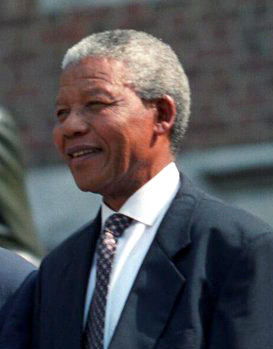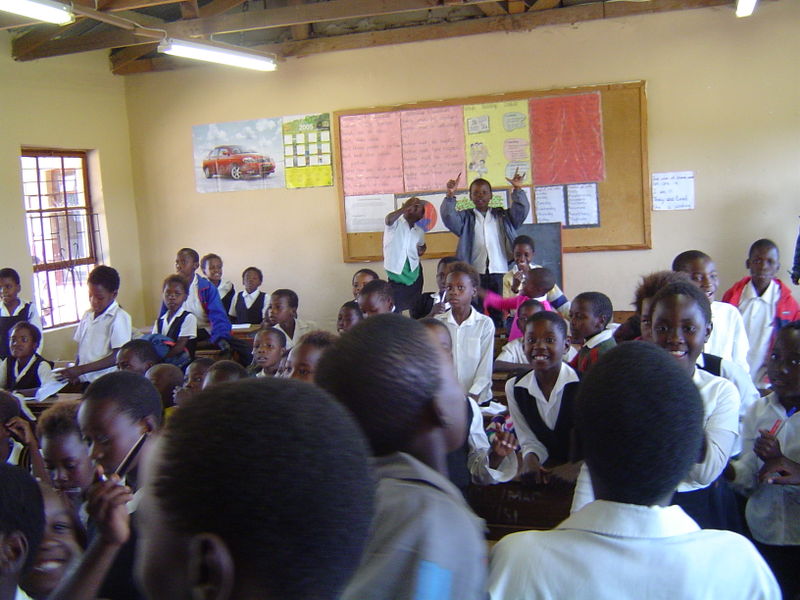
All eyes are focused on South Africa this year: it both hosts the World Cup and celebrates its 20th anniversary since the end of apartheid when Nelson Mandela walked those historic steps to freedom. In post-aparteid South Africa, education promised to hold part of the answer towards creating a fairer society. Development through education – would lead to freedom. The burning question remains - has this been achieved?
In a 2007 World Bank publication, Shafika Isaacs summarized the desired changes South Africa hoped to undertake:
"Since 1994 the South African education landscape has undergone major transformations in governance, management, curricular reform, and teacher professional development. Central to this transformation has been a complete policy overhaul in the form of a new national qualifications framework (NQF) and a new curriculum framework for schools based on the concept of outcomes-based education.The new system was considered one of the most ambitious and far-reaching reform programmes in southern Africa because it signalled a fundamental shift from South Africa’s apartheid past by promoting the principles of equity, democracy, human rights, and economic prosperity."
Dark Challenges

The Economist reported that “South Africa spends a bigger share – 20% of its national budget, and more than 5% of its GDP on education than any other country on the continent. Yet its results are among the worst.” In the same article, Graeme Bloch, an education expert at the Development Bank of Southern Africa, labelled his country's education system a "national disaster".
He cited in the article that around 80% of schools are "dysfunctional":
Half of all pupils drop out before taking their final "matric" exams. Only 15% get good enough marks to get into university. Of those who do get in, barely half end up with a degree. South Africa regularly comes bottom or near the bottom in international literacy, numeracy and science tests.
The Economist further documented South Africa's capacity limitations:
The latest matric results published in January 2010 showed a fall in the overall pass rate to 61%, compared with 73% in 2003. Much of the blame has been attributed to the introduction in 1998 of a supposedly more child-centred "outcomes-based education", designed to prepare children for a rapidly changing, technological world. But few schools had the resources to apply such ideas.
What The Numbers Point To – Race
The racial disparity is the biggest stain: the figures from the results of the 2008 matric examinations published by the South African Institute of Race Relations attest
to this. Apparently the results have barely changed over the past decade, as recorded on the website of the South African Institute of Race Relations.
| Race | Number of students who took the exams | Passed | Failed | Scoring high enough to be admitted for a Bachelor's degree | Percentage |
| African | 460,828 | 260,765 | 200,063 | 61,889 | 56.6% |
| Colored | 38,213 | 30,387 | 7,826 | 8,927 | 79.5% |
| Indian/Asian | 14,137 | 12,511 | 1,626 | 6,874 | 88.5% |
| White | 40,753 | 40,450 | 303 | 27,951 | 99.3% |
| Total | 554,663 | 344,794 | 209,869 | 106,047 | 62.2% |
After The Statistics – The Weakest Link
The key to change lies with teachers - according to the New York Times
Most teachers in South Africa’s schools today got inferior educations under the Bantu system, and this has seriously impaired their ability to teach the next generation, analysts say. Teachers are not tested on subject knowledge, but one study of third-grade teachers’ literacy, for example, found that the majority of them scored less than 50 percent on a test for sixth graders.
South Africa’s students have been known to resort to rioting, to protest against widely-practised teacher absenteeism – to try and show just how desperate the
effort to get an education has become. Let’s now pay attention.
Photo credits - The first image ("He wanted to give the next generation a brighter future") comes from Wikipedia and is the work of an employee of the Executive Office of the President of the United States taken during the course of the person's official duties. The second image ("The challenges for these students to get a good education") comes from a Wikipedian of Ian Mackenzie High School students.


Join the Conversation